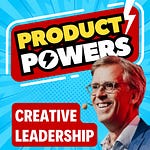This blog post is based on a talk I recently delivered at an Agile Meetup, where I shared my personal journey of building communities — from the villages of Punjab to the glass towers of corporate London.
If you’ve ever thought about starting a Community of Practice (CoP), or you’ve already got one that feels more like it’s not gaining traction, then this post is for you. Whether you're a community leader or just someone who wants to bring people together around a shared passion then I’m here to give you the ingredients for your very own secret sauce.
And spoiler alert: there’s no one-size-fits-all recipe. But there are some key ingredients you can start experimenting with today.
Why Communities of Practice Matter (Now More Than Ever)
According to research by Josh Bersin, the average knowledge worker only spends 1% of their week on formal learning. That’s about 24 minutes. You’ve probably spent longer today scrolling LinkedIn.
And yet, we’re expected to keep up with rapid change, stay relevant, and magically “collaborate” across silos. What if there was a better way to learn? Social learning and CoPs.
When done well, Communities of Practice offer:
Real-time problem-solving
Peer-to-peer learning
A safe space to explore messy challenges
A magnet for top talent
A secret weapon for organisational knowledge retention
But getting there takes more than setting up a few events. So let’s break down what really makes a community thrive.
The Real Meaning of “Community”
When I asked folks at the Meetup what comes to mind when they hear the word “community,” I got responses like:
“Togetherness. Support. Safe space. Communication.”
And they were spot on.
Community is more than Slack channels and SharePoint sites. It’s human. It’s built on trust, vulnerability, and a shared purpose.
For me, this all started in Punjab. As a kid visiting our village, I witnessed this powerful concept of seva — selfless service — and how elders gathered not because they were paid, but because they cared. They’d help resolve disputes, mentor the young, and support each other. No job titles. No KPIs. Just community in its purest form.
So What Is a Community of Practice?
There’s a difference between a Community of Interest and a CoP.
As defined by Etienne Wenger and Beverly Trayner, a true CoP has:
A shared domain – Something you deeply care about (not just a casual interest).
A community – People engaging, helping, challenging, and supporting one another.
A practice – Real practitioners learning and evolving their craft together.
Think of nurses sharing war stories over lunch. They may not label it a CoP, but it ticks the above three boxes.
Don’t Underestimate the Power of the Crowd
Quick story: In the early 1900s, a guy called Francis Galton used to attend English festivals. At the festivals, people would enter competitions to guess the weight of an ox. If they got it right, they wouldn’t win a cuddly toy, instead they’d win the ox. Individually, most were way off. But when he averaged their answers, it was always very close to the actual weight.
Lesson? The crowd is often wiser than the expert if the group is diverse, independent, and not coerced. And if you are an Agile practitioner, you will know that one of the core mindset beliefs is to collaborate when tackling tricky problems such as Agile estimation. And it’s exactly why CoPs can be such a powerful engine for innovation.
Another one: Xerox engineers used to solve machine problems not by reading the manual, but by phoning each other. Eventually, Xerox captured this underground knowledge-sharing network and turned it into Project Eureka, saving the company millions.
Engagement Is Your Biggest Challenge (And There’s a Rule for That)
Most communities fail not because they don’t have smart people, but because no one shows up.
What if I told you engagement for your community will probably at best follow this pattern?
90% of members will lurk silently.
9% will contribute occasionally.
1% will become your core contributors.
That’s called the 90-9-1 Rule. It’s a rule that most marketers use when estimating engagement for their campaigns. So don’t waste energy trying to engage the whole company. Focus on nurturing that top 10%. Reward them. Spotlight them. Get them involved.
How to Influence Without Forcing (Cialdini’s 7 Levers)
To increase further increase engagement, check out Robert Cialdini’s book titled Influence, it’s the Bible of persuasion, and here’s how his 7 levers apply to CoPs:
Authority – Showcase your experts. People trust those who walk the talk.
Liking – Be human. Be kind. Toxicity kills engagement.
Social Proof – Show others are joining. FOMO is a great way to entice others to engage.
Commitment – Get people to make public commitments (even small ones).
Scarcity – Limited seats? One-time event? More FOMO.
Unity – “We’re in this together” works better than “Come to our meeting.”
Reciprocity – Give first. People will feel compelled to give back.
Even a free mug works wonders.
Communities Have a Lifecycle Too
CoPs also go through stages, just like teams do.
Potential – We imagine what could be.
Forming – Everyone’s excited.
Storming – Real life kicks in. People disappear.
Maturing – Things stabilise… or they don’t.
Transformation or Closure – We evolve, or we end.
Support is critical in the early phases. Appoint a community lead. Set the vision. Run events. Then slowly step back as members take the wheel.
A Few Tips from My Own Experiments
Here’s what’s worked for me (feel free to steal with pride):
At Deutsche Bank, we grew our Agility Guild to 5,000 people. The secret? We launched Agile Awards with categories like “Most Collaborative Team.” We got 80 case studies overnight. People love prizes.
For a BA community, we used the Kano model (value vs. effort) to prioritise initiatives. External events had the highest satisfaction. Peer-run training sessions built real ownership.
And food. Never underestimate the power of pizza.
Final Thoughts
If there's one thing I’ve learned from building communities, it’s this: it takes time.
There’s no plug-and-play solution. Every organisation is different. Every group of people has its own quirks. But what does work is consistently and providing value.
Start small. Build trust. And don’t be discouraged if engagement starts slow. Most communities begin with a handful of committed people, not a crowd.
If you’re trying to build something and want to bounce ideas around, I’m always up for a chat. Simply reply to this post or ping me via LinkedIn.










